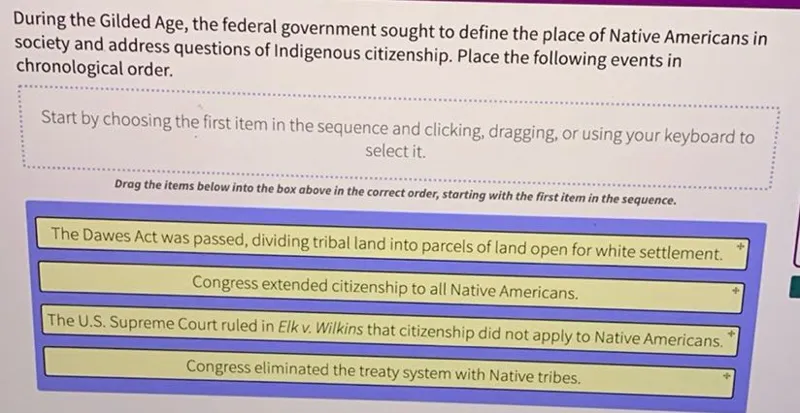Questions: During the Gilded Age, the federal government sought to define the place of Native Americans in society and address questions of Indigenous citizenship. Place the following events in chronological order. The Dawes Act was passed, dividing tribal land into parcels of land open for white settlement. Congress extended citizenship to all Native Americans. The U.S. Supreme Court ruled in Elk v. Wilkins that citizenship did not apply to Native Americans. Congress eliminated the treaty system with Native tribes.

Transcript text: During the Gilded Age, the federal government sought to define the place of Native Americans in society and address questions of Indigenous citizenship. Place the following events in chronological order.
The Dawes Act was passed, dividing tribal land into parcels of land open for white settlement.
Congress extended citizenship to all Native Americans.
The U.S. Supreme Court ruled in Elk v. Wilkins that citizenship did not apply to Native Americans.
Congress eliminated the treaty system with Native tribes.





